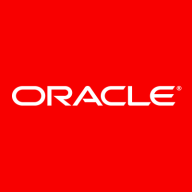


Find out what your peers are saying about Red Hat, Canonical, Oracle and others in Operating Systems (OS) for Business.



CentOS is a versatile operating system with many use cases, including virtual spaces, scientific computing, data center servers, web-based applications, and more. Its valuable features include customization options, low memory consumption, performance, scalability, open-source nature, cost-saving, and compatibility with Red Hat packages.
The solution has helped organizations save money on licensing and improve testing capabilities for new implementations without spending additional resources. CentOS is a stable, reliable, and efficient operating system that is easy to use and integrate with other applications and services.
Oracle Linux is a stable, reliable, and scalable operating system primarily used for deploying and running Oracle databases. It is also suitable for various other functions, including managing operating systems and web servers, supporting traffic surveillance, and identity management.
Oracle Linux is highly valued for its stability, reliability, scalability, good technical support, and ease of use. It has helped organizations to achieve faster DNS queries, stable development environments, reduced vulnerability issues, good performance for Oracle applications, and improved ability to run test scenarios and parallel queries across massive databases.
Oracle Linux Features
Oracle Linux has many valuable key features. Some of the most useful ones include:
Oracle Linux Benefits
There are many benefits to implementing Oracle Linux. Some of the biggest advantages the solution offers include:
Reviews from Real Users
Oracle Linux stands out among its competitors for a number of reasons. Two major ones are its stability and scalability. PeerSpot users take note of the advantages of these features in their reviews:
One PeerSpot reviewer, an IT Manager, reports, “I find the virtualization the most valuable.” He adds, “Oracle Linux is the best Linux operating system that I have ever known. It is very stable and strong.”
An Enterprise Architect at a financial services firm writes of the solution, “You also don't have memory issues, especially when it is engineered with platforms like Exadata and Oracle Cluster. These give you the most throughput and performance.” He adds, “It is very scalable, especially on platforms like Oracle Cluster and Exadata.”
Red Hat Enterprise Linux is recognized for its stability, security, and performance, serving diverse industries with its robust support and seamless cloud deployment capabilities.
Red Hat Enterprise Linux provides comprehensive server applications across cloud environments, featuring tools like Ansible for enhanced user experience. It integrates OpenShift, Identity Management, and automation, supported by extensive documentation. Users seek easier upgrades, enhanced network virtualization support, and improved live patching.
What are the key features of Red Hat Enterprise Linux?In sectors like finance, telecommunications, and education, Red Hat Enterprise Linux is crucial for running stable, secure systems. Its application spans web servers, data management, and containerization through tools like Kubernetes. Organizations adopt it for on-premises, virtualized, and cloud environments, ensuring robust infrastructure management.